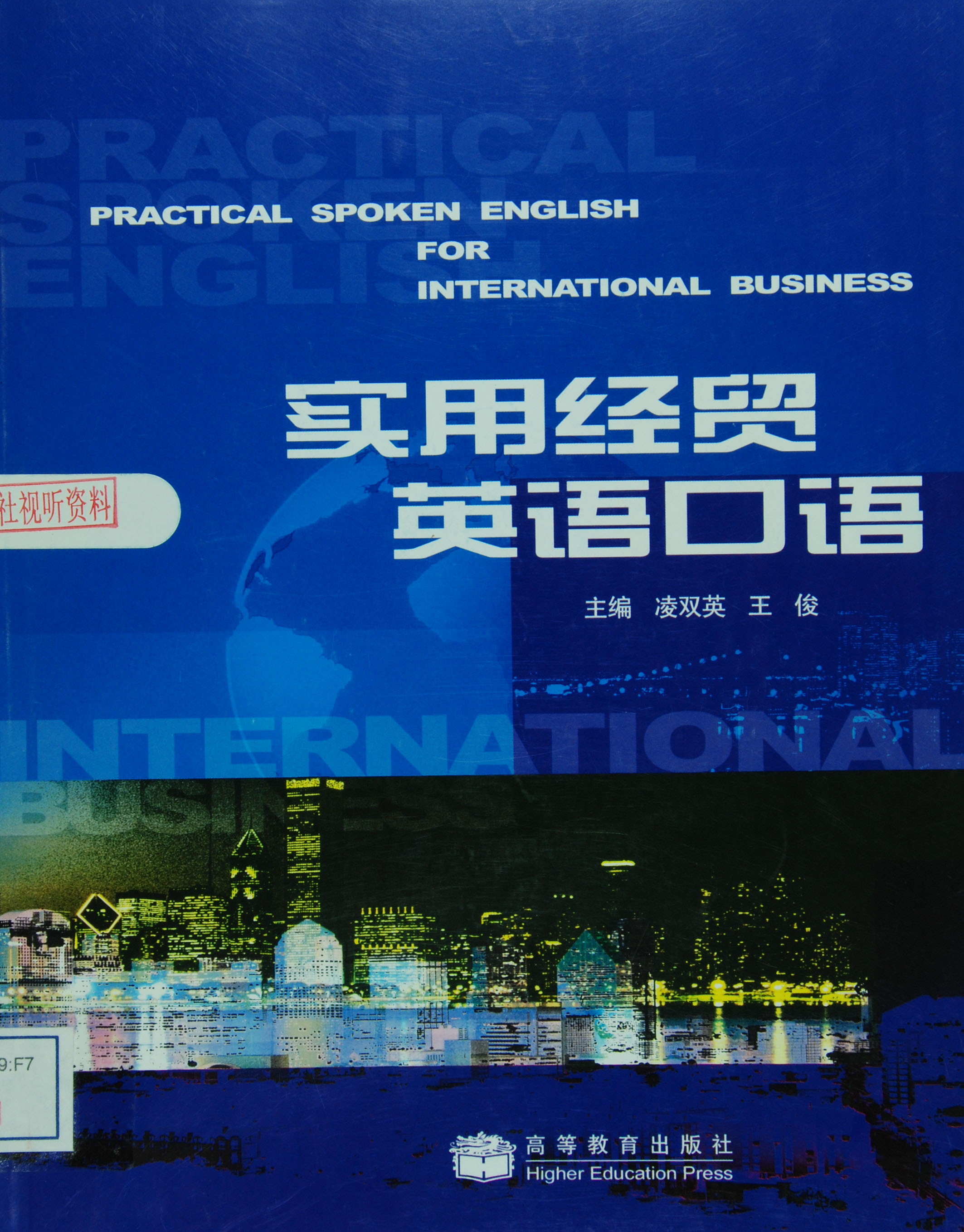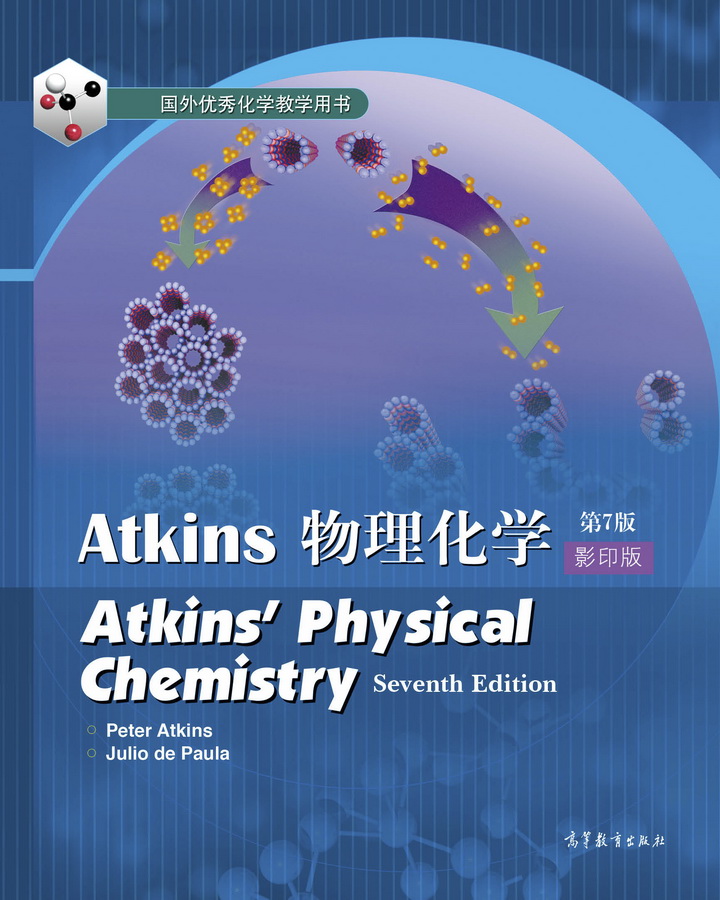有机化学(第9版)改编版
作者: LEROY G.Wade JR.,JAN WILLIAM SIMEK原著;王梅,姜文凤,蒋景阳改编
出版时间:2019-05
出版社:高等教育出版社
“十二五”普通高等教育本科国家级规划教材
- 高等教育出版社
- 9787040514896
- 9版
- 250639
- 46250799-7
- 平装
- 大16开
- 2019-05
- 1844
- 962
- 理学
- 化学
- O62
- 化学类、化工与制药类
- 本科
本书是LGWade和JWSimek编写的Organic Chemistry (Ninth Edition) 的改编版,是根据教育部关于高等学校本科教学质量工程要重视双语教学的文件精神,选择国外优秀英文原版有机化学教材,结合双语教学的实践经验改编而成的双语教材。全书共26章,涵盖内容与国内高等学校化学、化工类有机化学教材基本一致,包括有机化学概论、有机化合物命名、立体化学、结构表征、烃及卤代烃、含氧化合物、含氮化合物、天然有机化合物等内容。每章后有中文概要,书后附有索引。
本书可作为化学化工专业的有机化学双语教材,亦可作为其他相关专业的教学参考书,可使学生在学习有机化学基础知识的同时提高专业英语水平。
前辅文
Chapter 1 Structure and Bonding
Goals for Chapter 1
1-1 The Origins of Organic Chemistry
1-2 Principles of Atomic Structure
1-3 Bond Formation: The Octet Rule
1-4 Lewis Structures
1-5 Multiple Bonding
1-6 Electronegativity and Bond Polarity
1-7 Formal Charges
1-8 Ionic Structures
1-9 Resonance
1-10 Structural Formulas
1-11 Molecular Formulas and Empirical Formulas
1-12 Wave Properties of Electrons in Orbitals
1-13 Molecular Orbitals
1-14 Pi Bonding
1-15 Hybridization and Molecular Shapes
1-16 Drawing ThreeDimensional Molecules
1-17 General Rules of Hybridization and Geometry
1-18 Bond Rotation
1-19 Isomerism
Summary in Chinese
Study Problems
Chapter 2 Acids and Bases
Goals for Chapter 2
2-1 Polarity of Bonds and Molecules
2-2 Intermolecular Forces
2-3 Polarity Effects on Solubilities
2-4 Arrhenius Acids and Bases
2-5 BrnstedLowry Acids and Bases
2-6 Strengths of Acids and Bases
2-7 Equilibrium Positions of AcidBase Reactions
2-8 Solvent Effects on Acidity and Basicity
2-9 Effects of Size and Electronegativity on Acidity
2-10 Inductive Effects on Acidity
2-11 Hybridization Effects on Acidity
2-12 Resonance Effects on Acidity and Basicity
2-13 Lewis Acids and Bases
2-14 The CurvedArrow Formalism
Summary in Chinese
Study Problems
Chapter 3 Functional Groups and Nomenclature of Organic Compounds
Goals for Chapter 3
3-1 Hydrocarbons
3-2 Organic Compounds Containing Oxygen
3-3 Organic Compounds Containing Nitrogen
3-4 Nomenclature of Alkanes
3-5 Nomenclature of Cycloalkanes
3-6 Nomenclature of Alkenes
3-7 Nomenclature of Alkynes
3-8 Nomenclature of Benzene Derivatives
3-9 Nomenclature of Alkyl Halides
3-10 Nomenclature of Alcohols,Phenols and Thiols
3-11 Nomenclature of Ethers and Sulfides
3-12 Nomenclature of Amines
3-13 Nomenclature of Ketones and Aldehydes
3-14 Nomenclature of Carboxylic Acids
3-15 Structure and Nomenclature of Acid Derivatives
Summary in Chinese
Study Problems
Chapter 4 Structure and Stereochemistry of Alkanes
Goals for Chapter 4
4-1 Physical Properties of Alkanes
4-2 Uses and Sources of Alkanes
4-3 Reactions of Alkanes
4-4 Structure and Conformations of Alkanes
4-5 Physical Properties and Stabilities of Cycloalkanes
4-6 Cyclohexane Conformations
4-7 Conformations of Monosubstituted Cyclohexanes
4-8 Conformations of Disubstituted Cyclohexanes
4-9 Decalin Conformations
Summary in Chinese
Study Problems
Chapter 5 The Study of Chemical Reactions
Goals for Chapter 5
5-1 Introduction
5-2 Chlorination of Methane
5-3 The FreeRadical Chain Reaction
5-4 Equilibrium Constants and Free Energy
5-5 Enthalpy and Entropy
5-6 BondDissociation Enthalpies
5-7 Enthalpy Changes in Chlorination
5-8 Kinetics and the Rate Equation
5-9 Activation Energy and the Temperature Dependence of Rates
5-10 Transition States
5-11 Rates of Multistep Reactions
5-12 Temperature Dependence of Halogenation
5-13 Selectivity in Halogenation
5-14 Hammond’s Postulate
5-15 Radical Inhibitors
5-16 Reactive Intermediates
Summary in Chinese
Study Problems
Chapter 6 Stereochemistry
Goals for Chapter 6
6-1 Introduction
6-2 Chirality
6-3 (R) and (S) Nomenclature of Asymmetric Carbon Atoms
6-4 Optical Activity
6-5 Biological Discrimination of Enantiomers
6-6 Racemic Mixtures
6-7 Enantiomeric Excess and Optical Purity
6-8 Chirality of Conformationally Mobile Systems
6-9 Chiral Compounds without Asymmetric Atoms
6-10 Fischer Projections
6-11 Diastereomers
6-12 Stereochemistry of Molecules with Two or More Asymmetric Carbons
6-13 Meso Compounds
6-14 Absolute and Relative Configuration
6-15 Physical Properties of Diastereomers
6-16 Resolution of Enantiomers
Summary in Chinese
Study Problems
Chapter 7 Alkyl Halides: Nucleophilic Substitution and Elimination
Goals for Chapter 7
7-1 Introduction
7-2 Common Uses of Alkyl Halides
7-3 Structure of Alkyl Halides
7-4 Physical Properties of Alkyl Halides
7-5 Preparation of Alkyl Halides
7-6 Reactions of Alkyl Halides: Substitution and Elimination
7-7 Bimolecular Nucleophilic Substitution: The SN2 Reaction
7-8 Generality of the SN2 Reaction
7-9 Factors Affecting SN2 Reactions: Strength of the Nucleophile
7-10 Reactivity of the Substrate in SN2 Reactions
7-11 Stereochemistry of the SN2 Reaction
7-12 Unimolecular Nucleophilic Substitution: The SN1 Reaction
7-13 Stereochemistry of the SN1 Reaction
7-14 Rearrangements in SN1 Reactions
7-15 Comparison of SN1 and SN2 Reactions
7-16 Elimination:E1 and E2 Reaction
7-17 Unimolecular Elimination:The E1 Reaction
7-18 Positional Orientation of Elimination: Zaitsevs Rule
7-19 Bimolecular Elimination: The E2 Reaction
7-20 Bulky Bases in E2 Eliminations; Hofmann Orientation
7-21 Stereochemistry of the E2 Reaction
7-22 E2 Reactions in Cyclohexane Systems
7-23 Comparison of E1 and E2 Elimination Mechanisms
7-24 Competition Between Substitutions and Eliminations
Summary in Chinese
Study Problems
Chapter 8 Structure and Synthesis of Alkenes
Goals for Chapter 8
8-1 Introduction
8-2 The Orbital Description of the Alkene Double Bond
8-3 Elements of Unsaturation
8-4 Commercial Importance of Alkenes
8-5 Physical Properties of Alkenes
8-6 Stability of Alkenes
8-7 Alkene Synthesis by Elimination of Alkyl Halides
8-8 Alkene Synthesis by Dehydration of Alcohols
8-9 Alkene Synthesis by HighTemperature Industrial Methods
Summary in Chinese
Study Problems
Chapter 9 Reactions of Alkenes
Goals for Chapter 9
9-1 Reactivity of the CarbonCarbon Double Bond
9-2 Electrophilic Addition to Alkenes
9-3 Addition of Hydrogen Halides to Alkenes
9-4 Addition of Water: Hydration of Alkenes
9-5 Hydration by OxymercurationDemercuration
9-6 AlkoxymercurationDemercuration
9-7 Hydroboration of Alkenes
9-8 Addition of Halogens to Alkenes
9-9 Formation of Halohydrins
9-10 Catalytic Hydrogenation of Alkenes
9-11 Addition of Carbenes to Alkenes
9-12 Epoxidation of Alkenes
9-13 AcidCatalyzed Opening of Epoxides
9-14 Syn Dihydroxylation of Alkenes
9-15 Oxidative Cleavage of Alkenes
9-16 Polymerization of Alkenes
9-17 Olefin Metathesis
Summary in Chinese
Study Problems
Chapter 10 Alkynes
Goals for Chapter 10
10-1 Introduction
10-2 Physical Properties of Alkynes
10-3 Commercial Importance of Alkynes
10-4 Electronic Structure of Alkynes
10-5 Acidity of Alkynes: Formation of Acetylide Ions
10-6 Synthesis of Alkynes from Acetylides
10-7 Synthesis of Alkynes by Elimination Reactions
10-8 Addition Reactions of Alkynes
10-9 Oxidation of Alkynes
Summary in Chinese
Study Problems
Chapter 11 Conjugated Systems and OrbitalSymmetry
Goals for Chapter 11
11-1 Stabilities of Dienes
11-2 Molecular Orbital Picture of a Conjugated System
11-3 Allylic Cations
11-4 1,2 and 1,4Addition to Conjugated Dienes
11-5 Kinetic versus Thermodynamic Control in the Addition of HBr to Buta1,3diene
11-6 Allylic Radicals
11-7 Molecular Orbitals of the Allylic System
11-8 Electronic Configurations of the Allyl Radical, Cation, and Anion
11-9 SN2 Displacement Reactions of Allylic Halides and Tosylates
11-10 The DielsAlder Reaction
11-11 The DielsAlder as an Example of a Pericyclic Reaction
Summary in Chinese
Study Problems
Chapter 12 Infrared and Ultraviolet Spectroscopy
Goals for Chapter 12
12-1 Introduction
12-2 The Electromagnetic Spectrum
12-3 The Infrared Region
12-4 Molecular Vibrations
12-5 IRActive and IRInactive Vibrations
12-6 Measurement of the IR Spectrum
12-7 Infrared Spectroscopy of Hydrocarbons
12-8 Characteristic Absorptions of Alcohols and Amines
12-9 Characteristic Absorptions of Carbonyl Compounds
12-10 Characteristic Absorptions of C—N Bonds
12-11 Simplified Summary of IR Stretching Frequencies
12-12 Reading and Interpreting IR Spectra
12-13 Ultraviolet Absorption Spectroscopy
12-14 Interpreting UVVisible Spectra
12-15 Colored Organic Compounds
Summary in Chinese
Study Problems
Chapter 13 Nuclear Magnetic Resonance Spectroscopy and Mass Spectrometry
Goals for Chapter 13
13-1 Introduction to Nuclear Magnetic Resonance Spectroscopy
13-2 Theory of Nuclear Magnetic Resonance
13-3 Magnetic Shielding by Electrons
13-4 The NMR Spectrometer
13-5 The Chemical Shift
13-6 The Number of Signals
13-7 Areas of the Peaks
13-8 SpinSpin Splitting
13-9 Carbon13 NMR Spectroscopy
13-10 Interpreting Carbon NMR Spectra
13-11 Introduction to Mass Spectrometry
13-12 Determination of the Molecular Formula by Mass Spectrometry
13-13 Fragmentation Patterns in Mass Spectrometry
Summary in Chinese
Study Problems
Chapter 14 Structure and Synthesis of Alcohols
Goals for Chapter 14
14-1 Introduction
14-2 Structure and Classification of Alcohols
14-3 Physical Properties of Alcohols
14-4 Commercially Important Alcohols
14-5 Acidity of Alcohols and Phenols
14-6 Organometallic Reagents for Alcohol Synthesis
14-7 Reactions of Organometallic Compounds
14-8 Side Reactions of Organometallic Reagents: Reduction of Alkyl Halides
14-9 Reduction of the Carbonyl Group: Synthesis of 1° and 2° Alcohols
14-10 Thiols (Mercaptans)
Summary in Chinese
Study Problems
Chapter 15 Reactions of Alcohols
Goals for Chapter 15
15-1 Oxidation States of Alcohols and Related Functional Groups
15-2 Oxidation of Alcohols
15-3 Additional Methods for Oxidizing Alcohols
15-4 Alcohols as Nucleophiles and Electrophiles; Formation of Tosylates
15-5 Reduction of Alcohols
15-6 Reactions of Alcohols with Hydrohalic Acids
15-7 Reactions of Alcohols with Phosphorus Halides
15-8 Reactions of Alcohols with Thionyl Chloride
15-9 Dehydration Reactions of Alcohols
15-10 Unique Reactions of Diols
15-11 Esterification of Alcohols
15-12 Reactions of Alkoxides
Summary in Chinese
Study Problems
Chapter 16 Ethers,Epoxides,and Thioethers
Goals for Chapter 16
16-1 Introduction
16-2 Physical Properties of Ethers
16-3 Spectroscopy of Ethers
16-4 Synthesis of Ethers
16-5 Cleavage of Ethers by HBr and HI
16-6 Autoxidation of Ethers
16-7 Synthesis of Epoxides
16-8 AcidCatalyzed Ring Opening of Epoxides
16-9 BaseCatalyzed Ring Opening of Epoxides
16-10 Orientation of Epoxide Ring Opening
16-11 Reactions of Epoxides with Grignard and Organolithium Reagents
16-12 Epoxy Resins: The Advent of Modern Glues
16-13 Thioethers (Sulfides) and Silyl Ethers
Summary in Chinese
Study Problems
Chapter 17 Aromatic Compounds
Goals for Chapter 17
17-1 Introduction: The Discovery of Benzene
17-2 The Structure and Properties of Benzene
17-3 The Molecular Orbital Picture of Benzene
17-4 Aromatic, Antiaromatic, and Nonaromatic Compounds
17-5 Hückels Rule
17-6 Molecular Orbital Derivation of Hückels Rule
17-7 Aromatic lons
17-8 Heterocyclic Aromatic Compounds
17-9 Polynuclear Aromatic Hydrocarbons
17-10 Aromatic Allotropes of Carbon
17-11 Fused Heterocyclic Compounds
17-12 Physical Properties of Benzene and Its Derivatives
17-13 Spectroscopy of Aromatic Compounds
Summary in Chinese
Study Problems
Chapter 18 Reactions of Aromatic Compounds
Goals for Chapter 18
18-1 Electrophilic Aromatic Substitution
18-2 Halogenation of Benzene
18-3 Nitration of Benzene
18-4 Sulfonation of Benzene
18-5 Nitration of Toluene: The Effect of Alkyl Substitution
18-6 Activating, Ortho, ParaDirecting Substituents
18-7 Deactivating, MetaDirecting Substituents
18-8 Halogen Substituents: Deactivating, but Ortho, ParaDirecting
18-9 Effects of Multiple Substituents on Electrophilic Aromatic Substitution
18-10 The FriedelCrafts Alkylation
18-11 The FriedelCrafts Acylation
18-12 Nucleophilic Aromatic Substitution
18-13 Aromatic Substitutions Using Organometallic Reagents
18-14 Addition Reactions of Benzene Derivatives
18-15 SideChain Reactions of Benzene Derivatives
18-16 Reactions of Phenols
Summary in Chinese
Study Problems
Chapter 19 Ketones and Aldehydes
Goals for Chapter 19
19-1 Carbonyl Compounds
19-2 Structure of the Carbonyl Group
19-3 Physical Properties of Ketones and Aldehydes
19-4 Spectroscopy of Ketones and Aldehydes
19-5 Industrial Importance of Ketones and Aldehydes
19-6 Review of Syntheses of Ketones and Aldehydes
19-7 Reactions of Ketones and Aldehydes: Nucleophilic Addition
19-8 Hydration of Ketones and Aldehydes
19-9 Formation of Acetals
19-10 Formation of Cyanohydrins
19-11 Formation of Imines
19-12 Condensations with Hydroxylamine and Hydrazines
19-13 The Wittig Reaction
19-14 Oxidation of Aldehydes
19-15 Reductions of Ketones and Aldehydes
Summary in Chinese
Study Problems
Chapter 20 Amines
Goals for Chapter 20
20-1 Introduction
20-2 Structure of Amines
20-3 Physical Properties of Amines
20-4 Basicity of Amines
20-5 Factors that Affect Amine Basicity
20-6 Salts of Amines
20-7 Amine Salts as PhaseTransfer Catalysts
20-8 Spectroscopy of Amines
20-9 Aromatic Substitution of Arylamines and Pyridine
20-10 Alkylation of Amines by Alkyl Halides
20-11 Acylation of Amines by Acid Chlorides
20-12 Formation of Sulfonamides
20-13 Amines as Leaving Groups: The Hofmann Elimination
20-14 Oxidation of Amines: The Cope Elimination
20-15 Reactions of Amines with Nitrous Acid
20-16 Reactions of Arenediazonium Salts
20-17 Synthesis of Amines by Reductive Amination
20-18 Synthesis of Amines by AcylationReduction
20-19 Syntheses Limited to Primary Amines
Summary in Chinese
Study Problems
Chapter 21 Carboxylic Acids
Goals for Chapter 21
21-1 Introduction
21-2 Structure and Physical Properties of Carboxylic Acids
21-3 Acidity of Carboxylic Acids
21-4 Salts of Carboxylic Acids
21-5 Commercial Sources of Carboxylic Acids
21-6 Spectroscopy of Carboxylic Acids
21-7 Synthesis of Carboxylic Acids
21-8 Condensation of Acids with Alcohols: The Fischer Esterification
21-9 Esterification Using Diazomethane
21-10 Condensation of Acids with Amines: Direct Synthesis of Amides
21-11 Formation of Acid Chlorides
21-12 Reduction of Carboxylic Acids to Form Alcohols
21-13 Alkylation of Carboxylic Acids to Form Ketones
Summary in Chinese
Study Problems
Chapter 22 Carboxylic Acid Derivatives
Goals for Chapter 22
22-1 Introduction
22-2 Physical Properties of Carboxylic Acid Derivatives
22-3 Spectroscopy of Carboxylic Acid Derivatives
22-4 Interconversion of Acid Derivatives by Nucleophilic Acyl Substitution
22-5 Transesterification
22-6 Hydrolysis of Carboxylic Acid Derivatives
22-7 Reduction of Acid Derivatives
22-8 Reactions of Acid Derivatives with Organometallic Reagents
22-9 Esters and Amides of Carbonic Acid
Summary in Chinese
Study Problems
Chapter 23 Condensations and Alpha Substitutions of Carbonyl Compounds
Goals for Chapter 23
23-1 Introduction
23-2 Enols and Enolate Ions
23-3 Alpha Halogenation of Ketones
23-4 Alpha Bromination of Acids: The HVZ Reaction
23-5 Alkylation of Enolate Ions
23-6 Formation and Alkylation of Enamines
23-7 The Aldol Condensation of Ketones and Aldehydes
23-8 Dehydration of Aldol Products
23-9 Crossed Aldol Condensations
23-10 Aldol Cyclizations
23-11 The Claisen Ester Condensation
23-12 The Dieckmann Condensation: A Claisen Cyclization
23-13 Crossed Claisen Condensations
23-14 Syntheses Using β Dicarbonyl Compounds
23-15 The Malonic Ester Synthesis
23-16 The Acetoacetic Ester Synthesis
23-17 Conjugate Additions: The Michael Reaction
23-18 The Robinson Annulation
Summary in Chinese
Study Problems
Chapter 24 Carbohydrates and Nucleic Acids
Goals for Chapter 24
24-1 Introduction
24-2 Classification of Carbohydrates
24-3 Monosaccharides
24-4 Cyclic Structures of Monosaccharides
24-5 Anomers of Monosaccharides: Mutarotation
24-6 Reactions of Monosaccharides: Reduction
24-7 Oxidation of Monosaccharides: Reducing Sugars
24-8 Nonreducing Sugars: Formation of Glycosides
24-9 Ether and Ester Formation
24-10 Reactions with Phenylhydrazine: Osazone Formation
24-11 Chain Shortening: The Ruff Degradation
24-12 Chain Lengthening: The KilianiFischer Synthesis
24-13 Disaccharides
24-14 Polysaccharides
24-15 Nucleic Acids: Introduction
24-16 Ribonucleosides and Ribonucleotides
24-17 The Structures of RNA and DNA
24-18 Additional Functions of Nucleotides
Summary in Chinese
Study Problems
Chapter 25 Amino Acids,Peptides, and Proteins
Goals for Chapter 25
25-1 Introduction
25-2 Structure and Stereochemistry of the α Amino Acids
25-3 AcidBase Properties of Amino Acids
25-4 Isoelectric Points
25-5 Synthesis of Amino Acids
25-6 Resolution of Amino Acids
25-7 Reactions of Amino Acids
25-8 Structure and Nomenclature of Peptides and Proteins
25-9 Peptide Structure Determination
25-10 Laboratory Peptide Synthesis
25-11 Classification of Proteins
25-12 Levels of Protein Structure
25-13 Protein Denaturation
Summary in Chinese
Study Problems
Chapter 26 Lipids
Goals for Chapter 26
26-1 Introduction
26-2 Waxes
26-3 Triglycerides
26-4 Saponification of Fats and Oils: Soaps and Detergents
26-5 Phospholipids
26-6 Steroids
26-7 Terpenes
Summary in Chinese
Study Problems
Brief Answers to Selected Problems
Index
Appendixes











